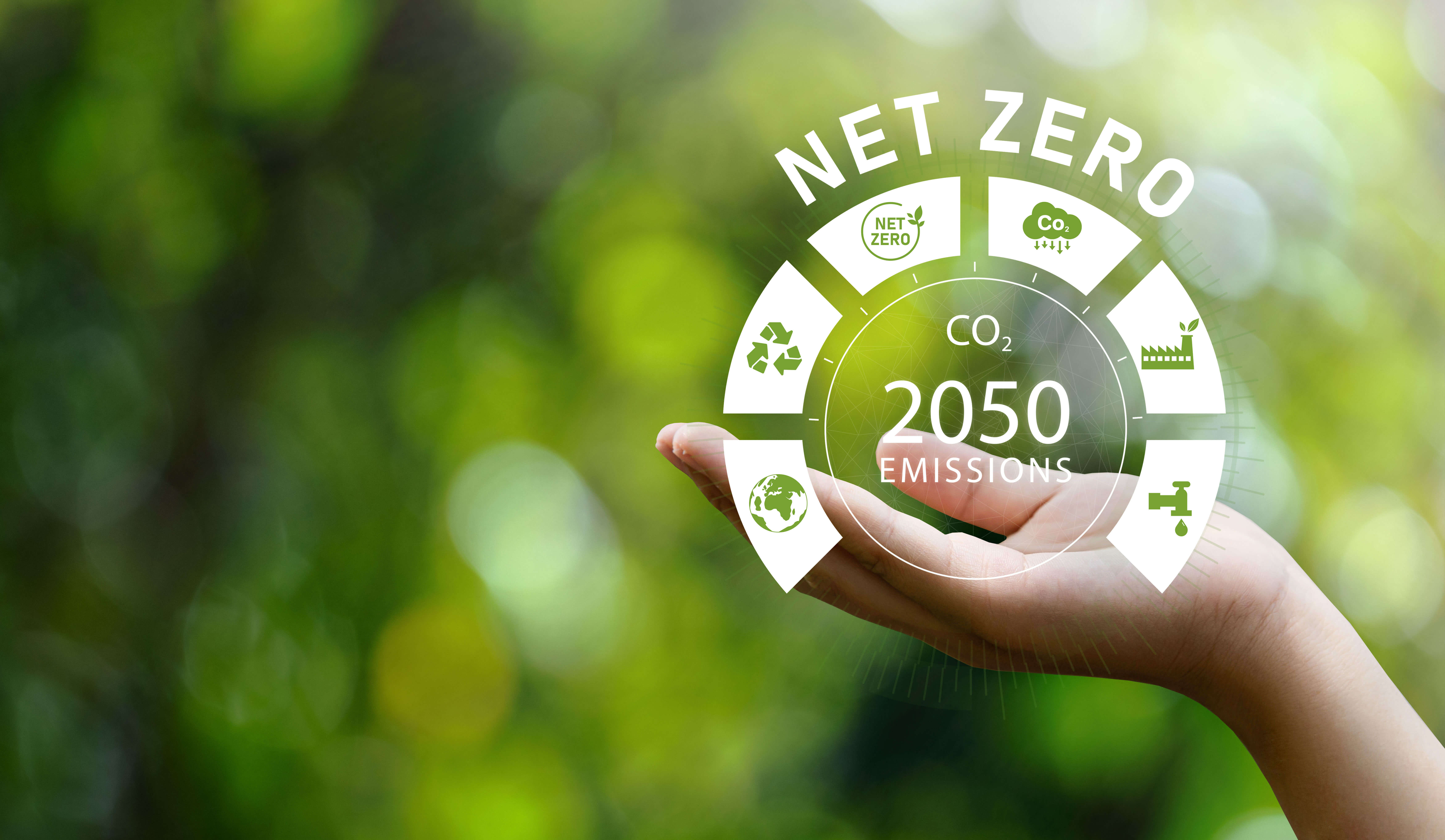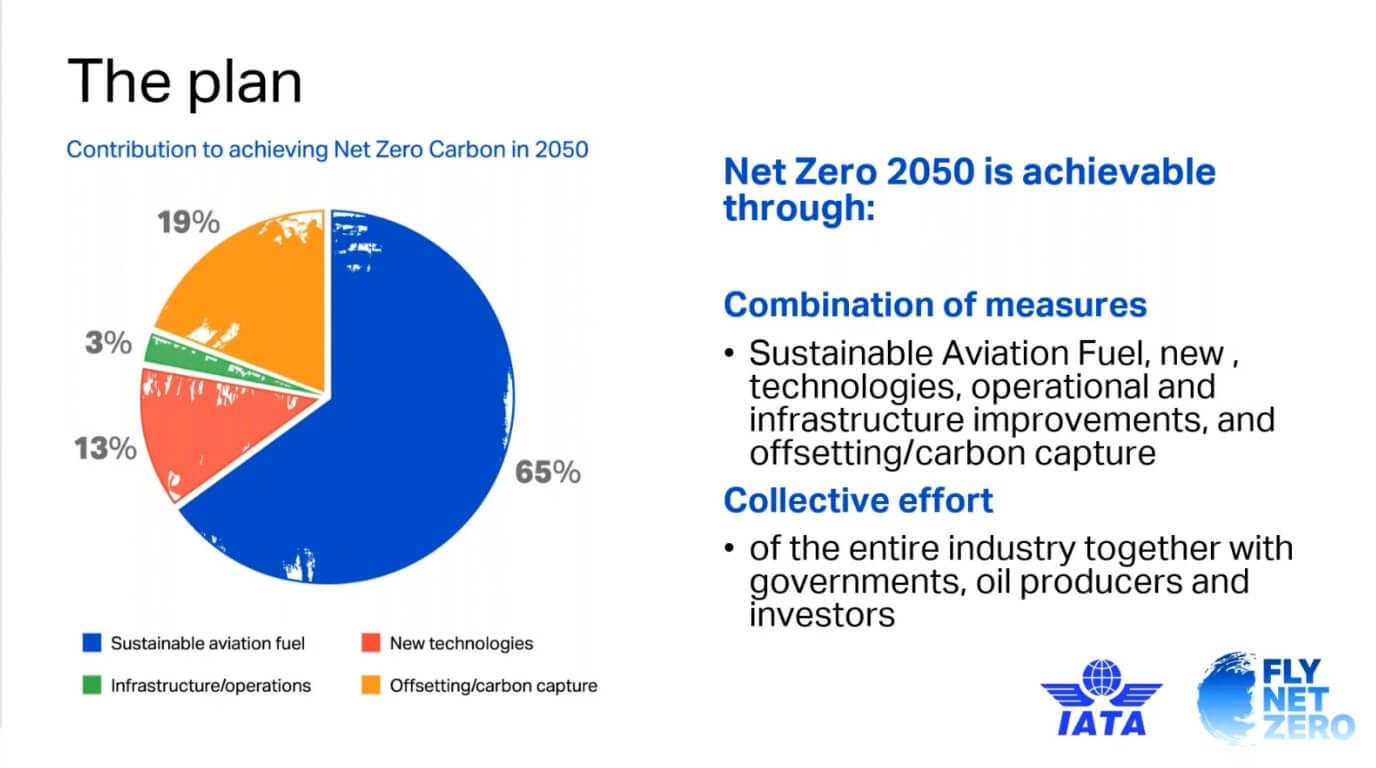Aviation's "Net Zero by 2050" roadmap and reality check

“Net Zero by 2050” has been further supported by ICAO’s long-term goal to decarbonize air travel; this agreement has aligned governments with a shared target to achieve net-zero emissions by 2050
In 2021, the aviation industry took the unprecedented step to become net zero by 2050. This commitment brings air travel in line with the objectives of the Paris Agreement and is further supported by the International Civil Aviation Organization’s (ICAO) adoption of a Long-Term Aspirational Goal to decarbonize air travel. The ICAO agreement aligns governments with the goal set; they now share the same target to achieve net-zero emissions by 2050. “There is no time to waste and all stakeholders need to work together to ensure that 'Net Zero by 2050' becomes a reality,” comments Marie Owens Thomsen, SVP Sustainability & Chief Economist, International Air Transport Association (IATA). She says that addressing climate change and creating a resilient and sustainable industry is a top priority moving forward.

IATA has released a series of roadmaps to net zero that provide a step-by-step action plan in order for the aviation industry to be successful
IATA has released a series of roadmaps to net zero that provide a step-by-step action plan in order for the industry to be successful. The roadmaps address aircraft technology, energy and new fuels infrastructure, operations, finance and policy.
“The roadmaps are the first detailed assessment of the key steps necessary to accelerate the transition to net zero by 2050. Together, they show a clear direction and will evolve as we dig deeper to set interim milestones on the way to net zero. The roadmaps are aimed at airlines, but also for governments, suppliers, and financiers.
“The main message of these roadmaps, from IATA and the industry, is that it is possible to achieve net zero by 2050. Success will depend on early, harmonized policy support, which should be technology agnostic, and include targeted financing. The greatest challenge isn’t related to any specific solution, but to the pace at which [sustainable aviation] needs to happen, and the collaboration needed,” explains Owens Thomsen.
Potential limitations and operational improvements
Also shedding light on the global issue is Bain & Company. The management consultancy firm released its study “A Realistic Path to Net-Zero Emissions for Commercial Aviation” in June and it tells a slightly different story. According to Bain & Company, “airlines can only eliminate up to 70% of aviation emissions by 2050 by improving engine and aircraft efficiency, broadly adopting sustainable aviation fuel (SAF) and optimizing aircraft operation.” The firm reports limitations to current technology mean this might not be enough for the industry to achieve its goal. This is especially the case if air traffic continues to grow at a faster rate than GDP.
In a 2023 press release, Co-Leader of Bain & Company’s Aerospace, Defense & Government Services practice Jim Harris says, “As air traffic continues to grow, airlines are under increasing pressure to reduce emissions in service of their 2050 net zero goals. Unfortunately, many of the technologies the industry needs to decarbonize are unlikely to be operating at scale by 2050. Leading airlines will develop a strategy to secure an affordable supply of sustainable aviation fuel, mitigate the rise in operating costs, and manage the impacts of declining demand as a result of higher prices.”
Research by Bain & Company says the best bets for 2050 include that airlines can reduce CO2 emissions by 43% through fuel efficiencies with current aircraft renewal cycles and operational improvements; and a new generation of evolutionary engines and aircraft-frame improvements would deliver 80% of these gains. It adds that the rest could be made up by continued efforts to optimize flight and ground operations.
The release continues, “Analysis shows SAF prices in 2050 will remain two to four times higher than the average historical price of Jet A fuel, the most commonly used aviation fuel over the past decade. To meet its 2050 goal, the industry will need to invest up to US$2.1 trillion. This, combined with the high maintenance costs of new aircraft, means airlines’ overall costs are likely to increase by up to 18% by 2050.” As highlighted by the firm, governments could significantly reduce SAF supply by providing incentives to biofuel refineries rather than renewable diesel.
Takeaway all of the figures and findings and one thing is certain, it is agreed that there is no single solution for decarbonizing aviation by 2050. Whether falling short or forging ahead, it will rely on a collective effort and the need to consider all aspects of the industry.

Research by Bain & Company shows sustainable aviation fuel prices in 2050 will remain two to four times higher than the average historical price of Jet A fuel
Sustainable tourism and practices
When it comes to airlines returning to profitability for the first time since the pandemic, a net profit margin of 1.2% is forecast for this year. According to Owens Thomsen, the airline financial performance in 2023 is exceeding expectations and higher profitability is due to several positive developments including the lifting of COVID-19 restrictions in China earlier than expected. Plus, cargo revenues remain above pre-pandemic levels even though cargo volumes do not and – while still high – jet fuel prices moderated in the first half of the year.
Owens Thomsen states making air travel sustainable will come at a cost. “Our objective is to make the process as economically efficient as possible. Airlines are businesses, and costs added to the business need to be recouped in the price charged to customers. This is particularly true considering that airlines historically operate on wafer thin margins,” she says.
When asked about the growing interest in sustainable tourism among leisure travelers worldwide and its key pillars, Owens Thomsen notes that aviation is an integral part of the tourism value chain. The industry is working hard to reduce its environmental footprint across all of its operations. As an example, she says in Europe, especially in countries with well-developed rail networks like France, Italy, Spain, Germany and Switzerland, IATA is seeing airlines offering more and more tickets with options favoring intramodality.
Within the same realm, Owens Thomsen points out that managing on board catering is also a priority for airlines, from food waste to single-use-plastics (SUPs). With this also on the agenda, the association is working on several initiatives with airlines and other organizations across the value chain. This includes a partnership with the United Nations Environment Program to tackle SUPs and other sustainability challenges.
The association launched the IATA World Sustainability Symposium in Madrid, Spain, on October 3-4, 2023. As shared by IATA, the symposium will facilitate discussion in seven key areas including the crucial role of government and policy support, the effective implementation of sustainability measures and financing the energy transition.









